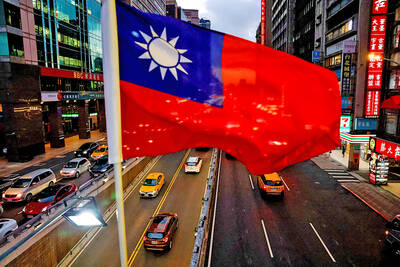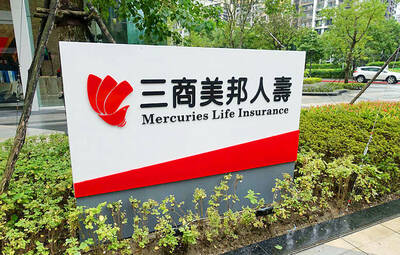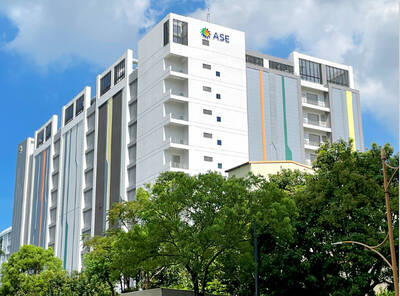Unable to get a slot on a container vessel, Lee Sang-hoon is considering using fishing trawlers docked for repair in the South Korean port of Busan to meet surging export orders for the engine oil he sells to Russia.
“China is the black hole in this shipping crisis, all the carriers are headed there,” said Lee, owner of Dongkwang International Co in Busan, which makes about 20 billion won (US$17.60 million) in annual revenue.
“Those fishing boats out there could be an answer for us, because we’re already one month behind schedule. That is, if we can iron out packaging issues,” Lee said, pointing out to empty fishing trawlers visible from his Busan office.
Booking trawlers is one way businesses in the world’s seventh-largest exporting nation are trying to overcome critical bottlenecks caused by the COVID-19 pandemic, particularly a shortage of shipping containers.
Thousands of exporters like Dongkwang are struggling to move their goods through Busan, the world’s seventh-busiest container port, where terminals handle more than 59,000 containers daily to process about 75 percent of all shipping for the country.
As global carriers race to deliver everything from furniture to toys to the US and European, they prioritize much larger batches of cargo waiting to be picked up along China’s factory belt over Busan.
That leaves fewer vessels in the South Korean port and a glut of them in China, cargo managers at Busan’s terminals said.
“As many [ships] depart from China where factories are mostly fully in operation, there’s little vessel space left by the time they stop in Busan,” said Lee Eung-hyuk, a marketing director at Busan Port Authority.
Some do not stop in Busan at all. The number of incoming container ships in Busan fell almost 10 percent through May, even as exports soared 23.4 percent from a year earlier, port authority data showed, resulting in an uneven recovery for Asia’s fourth-largest economy.
On a real-time map of the world’s major vessels at a control tower operated by HMM Co, the country’s biggest container carrier, most of the red and yellow dots show its alliance fleet concentrated around China and Singapore, not South Korea.
While the shipping squeeze caused is a global problem, the congestion at a transit hub like Busan has made things worse for smaller South Korean exporters.
When Yantian, one of China’s busiest ports, was partially shut down last month to control virus cases, some cargo was diverted to neighboring ports such as Busan, worsening the backlogs and periodic delays.
“It’s a transit hub with so many in and outs. We need to ship 30 containers a month, but have only been able to secure about 70 percent to 80 percent of that,” Lee said, adding that his company recently raised prices due to higher shipping costs.
Carriers sometimes refuse to accept bookings at all, or force customers to accept much higher spot rates, he said.
The pain is most acutely felt on less-popular routes that smaller firms often use, making shipping rates from Busan to Vladivostok, Russia, rise faster than to the US’ west coast, for example.
Dongkwang is paying US$2,200 per twenty-foot equivalent units for the route, up about six times from a year earlier.
For South Korea’s larger industrials like Samsung Electronics Co and LG Electronics Inc, the shipping squeeze is not as dire, because carriers tend to prioritize orders from customers with deep pockets and a larger volume of goods to be shipped.
To provide relief, the South Korean government has helped finance HMM orders for more containers and expanded cash handouts to support affected small-to-medium exporters.
At Busan’s New Port, terminal congestion is clearly visible.
At one of the five new terminals, outbound containers full of goods were stacked to their vertical limits.
Transit vessels carrying thousands of containers were being unloaded by automated cranes, which use artificial intelligence to find space for the steel boxes.
Every 10 seconds, a truck carrying a 20-foot or 40-foot container passes through the gate, taking them to warehouses, which already seem bursting at the seams.

AI BOOST: Although Taiwan’s reliance on Chinese rare earth elements is limited, it could face indirect impacts from supply issues and price volatility, an economist said DBS Bank Ltd (星展銀行) has sharply raised its forecast for Taiwan’s economic growth this year to 5.6 percent, citing stronger-than-expected exports and investment linked to artificial intelligence (AI), as it said that the current momentum could peak soon. The acceleration of the global AI race has fueled a surge in Taiwan’s AI-related capital spending and exports of information and communications technology (ICT) products, which have been key drivers of growth this year. “We have revised our GDP forecast for Taiwan upward to 5.6 percent from 4 percent, an upgrade that mainly reflects stronger-than-expected AI-related exports and investment in the third

Mercuries Life Insurance Co (三商美邦人壽) shares surged to a seven-month high this week after local media reported that E.Sun Financial Holding Co (玉山金控) had outbid CTBC Financial Holding Co (中信金控) in the financially strained insurer’s ongoing sale process. Shares of the mid-sized life insurer climbed 5.8 percent this week to NT$6.72, extending a nearly 18 percent rally over the past month, as investors bet on the likelihood of an impending takeover. The final round of bidding closed on Thursday, marking a critical step in the 32-year-old insurer’s search for a buyer after years of struggling to meet capital adequacy requirements. Local media reports

TECHNOLOGICAL RIVALRY: The artificial intelligence chip competition among multiple players would likely intensify over the next two years, a Quanta official said Quanta Computer Inc (廣達), which makes servers and laptops on a contract basis, yesterday said its shipments of artificial intelligence (AI) servers powered by Nvidia Corp’s GB300 chips have increased steadily since last month, should surpass those of the GB200 models this quarter. The production of GB300 servers has gone much more smoothly than that of the GB200, with shipments projected to increase sharply next month, Quanta executive vice president Mike Yang (楊麒令) said on the sidelines of a technology forum in Taipei. While orders for GB200 servers gradually decrease, the production transition between the two server models has been

ASE Technology Holding Co (日月光投控), the world’s largest integrated circuit (IC) packaging and testing supplier, yesterday announced a strategic collaboration with Analog Devices Inc (ADI), coupled with the signing of a binding memorandum of understanding. Under the agreement, ASE intends to purchase 100 percent shares of Analog Devices Sdn Bhd and acquire its manufacturing facility in Penang, Malaysia, a press release showed. The ADI Penang facility is located in the prime industrial hub of Bayan Lepas, with an area of over 680,000 square feet, it said. In addition, the two sides intend to enter into a long-term supply agreement for ASE to